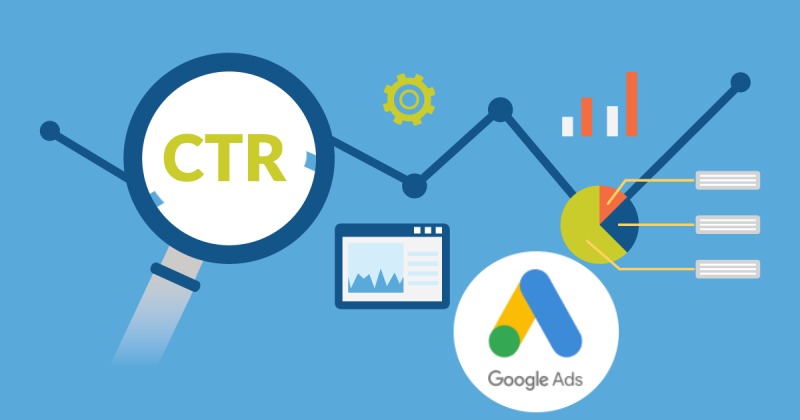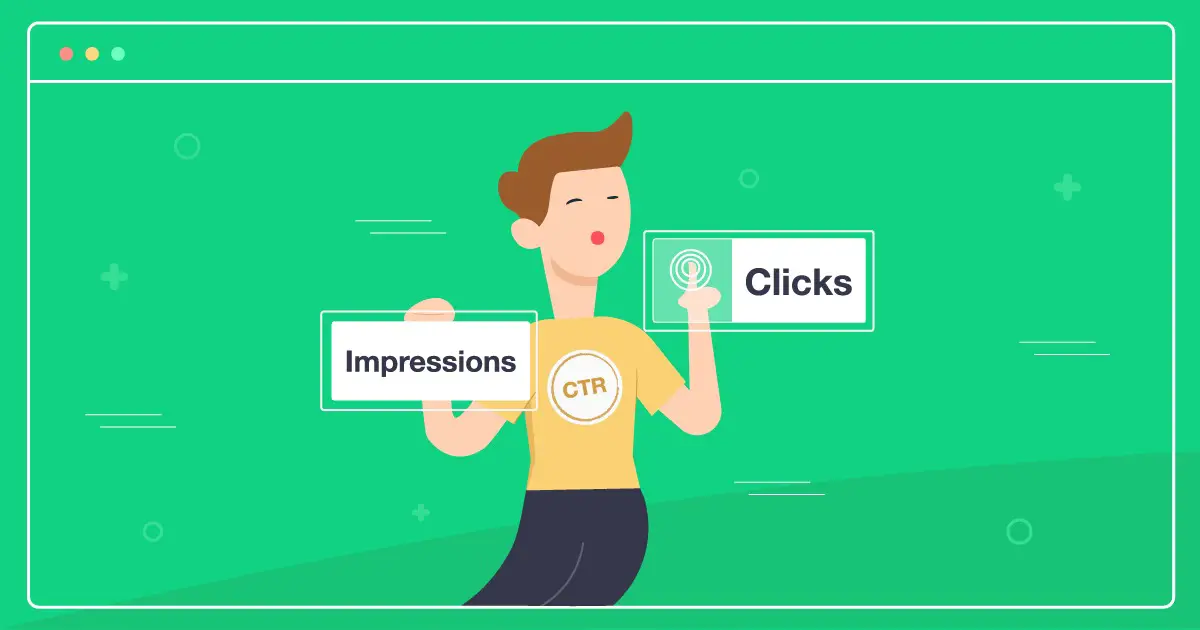Today we are going to explain what click through rate (CTR) is and give you some tips to improve it. Those who are managing a site know the CTR well because they encounter it almost every day.
What is the click through rate (CTR)?
CTR is an acronym for Click Through Rate. it is a fundamental performance indicator for all advertising campaigns running on the web. We can say that the CTR measures the relationship that exists between the number of clicks received and the relative impressions or views of the publication.
The CTR has the function of indicating how many times a particular ad was clicked on in relation to the number of times it was viewed.

High CTR values indicate that the messages we are proposing are in line with our intentions. If we manage to increase the traffic on our website, there is a better chance of converting them into previously defined actions. For example, Google uses this evaluation tool to provide all webmasters with an idea of the performance of the different snippets present on the search engine pages. This also happens with Search Console when we are dealing with organic searches.
Why is the click through rate important?
Regardless of the reasons you may be interested in CTR on platforms like Google Ads or Facebook Ads, CTR is a micro conversion and an indicator that your method is working on the first step. CTR is a metric that certain advertising platforms use to determine the quality of your advertising. It is advisable to always optimize for macro conversion, but micro conversions can give you a more complete picture of changes in user behavior.
Click-through rate, or CTR, is an important metric for SEO for many reasons. For one, it is likely to be a ranking factor. Secondly, the important thing about SEO is not just how high it ranks, but how much relevant traffic it actually brings to your website. Click-through rate is, in the true sense of the word, the metric that defines this factor. Therefore, it is important to take this rate into account.
Only when users see an ad and click on it, companies have a chance to make a conversion. So, the higher the CTR, the higher the chance of a conversion, at least in theory. In practice, an ad may have a large number of impressions, but the conversion rate may be low. A good CTR rate increases the chances of achieving a good conversion rate, consequently, a good return on investment.
How is the CTR calculated?
The CTR is calculated by dividing the number of clicks received by the number of views. Once the result is obtained, it is multiplied by 100. Let’s suppose that our ad received 150 clicks and the number of views was equal to 1,000. In this case we divide 150 by 1,000, then multiply the result by 100. (150/1000) x 100 = 15%. This will be our CTR value indicating that the ad we reviewed received clicks from 15% of those who viewed it.

That said, there are a number of elements that can affect the click-through rate and therefore the CTR. Among these elements we can mention:
- The attractiveness of the proposed offers (the higher it is, the more users are compelled to click),
- The content of the ads (the more relevant they are, the more users will be interested in them).
- The placement of the ads on the pages of the site (the more “priority” the ads have, the easier it will be for the message to attract attention).
How to measure CTR with Google Search Console?
When talking about CTR with respect to Google, we can’t fail to make an important remark. The Google universe is made up of numerous types of vertical search engines and free and paid commercial services. Consequently, the click-through rate on an ad is generally always calculated in the same way, but its function is different and the CTR value brings more or less different benefits. It is convenient to analyze the CTR depending on the type of conversion we expect.

Google Search Console allows you to check the CTR of all the pages on your site that receive traffic from Google. You simply go to Search Traffic and then Search Analytics. To see the CTR, you will have to check the box with a red circle at the top of the page. There you will find the table with the pages of your site and the corresponding CTR values. If the value is low, you can try with a more attractive title to improve the CTR.
Where to look for the CTR on Facebook ads?
CTR on Facebook measures how often someone clicked on your ad and how many times your ad was viewed on the platform. To look at the CTR of your Facebook ads just follow the steps below:
- Log in to Facebook Ads Manager.
- Open the “Ads” tab.
- Select the time period you want to view.
- Open the “Columns” drop-down menu and select “Performance and clicks”.
- Go to the right until you find the “CTR (All)” column.
On Facebook, and other advertising platforms, the CTR is a valid indicator of the usefulness and relevance of an ad; also of the interest that the latter arouses in users. This metric is used by Facebook advertisers to understand how ads drive traffic to websites and other destinations. Remember that the CTR of your ad is not the only metric to determine whether it is successful or not, but it is very useful as a benchmark in optimizing your campaigns.
How much is a good click-through rate?
When starting an ad campaign there’s always a common question: when can we say that we have a good CTR and therefore we can be satisfied with the performance of our ad campaigns? Unfortunately, there is no definitive answer to this question. This is because evaluations depend on a wide range of factors such as, for example, the type of campaign, the competitors that have come into play, the target users we are referring to, among many variables.

To find an answer to this question, the best that can be done is a comparison with market benchmarks. Facebook ads, to take one of the classic examples, have an average CTR of always less than 1%. If we are in that range, then, we can believe that we have done a good job: the ads are performing well! If, on the other hand, we use Google, to stay in the average CTR should be around 2%.
Ideas to optimize and increase CTR
Many experts think that an ad campaign cannot be evaluated by CTR alone. This is true, but only partially. If the CTR is less than or equal to 1.5%, then there is a problem. When a campaign has finished its learning process and the audience has been set up correctly, it should normally be between 3% and 5%. Putting these ideas into practice will allow you to optimize and increase the CTR and make your advertising campaign successful.
- Be specific with keywords: Keywords are among the most important things to consider in Google Ads – we always try to use the best ones. A well-written, high-quality ad loses a lot of traffic if it doesn’t match the right keywords. The correct use of these words ensures that our business reaches the right users with our ads, getting higher chances of clicks and, therefore, maximizing the return on advertising investment.
- Know your audience: All companies aim to increase their traffic, especially when we talk about paid campaigns. In fact, investing money in a successful ad has nothing to do with investing in campaigns that do not work. Despite this, we must always be sure that the traffic received from the Google Ads campaign is correct. This means that knowing our target audience is fundamental and we must do it even before starting the development of the advertising campaign.

- Include keywords in the URL of the ad: Adding keywords to the URL of the ads is an excellent way to generate trust in those who see them. At the very moment, the keyword is found in the web address, we are giving certainty to visitors that, when they click on the ad in question, they will really find what they are looking for. Those who use this technique find a higher CTR increase than those who do not use it.
- Add effective calls to action: While it may seem easy enough, strong calls to action in our ad copy can significantly increase CTR. The moment users see the ads, they will want to know the next steps. When we tell them exactly what to do, we are guiding them toward the long-awaited conversion. In this case, it is curiosity that will prompt visitors to click on the ad.





